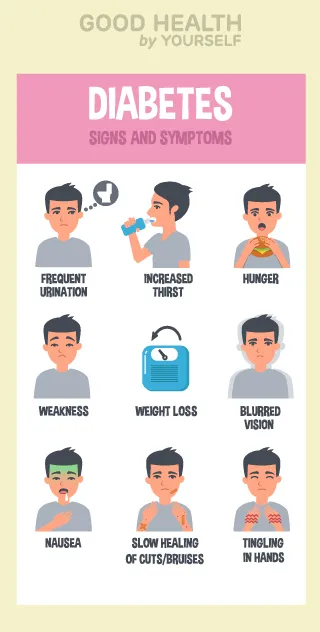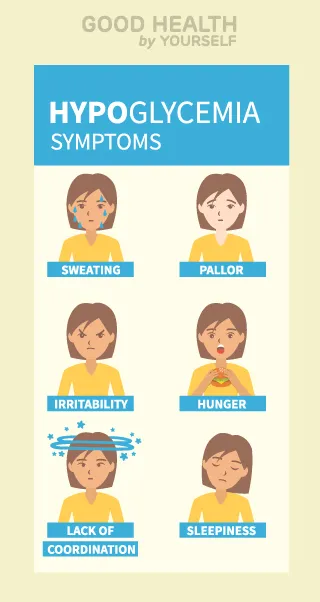Decoding Blood Glucose Level Readings: What They Mean
Key Highlights
- Maintain optimal blood sugar levels for good management of prediabetes and diabetes.
- Both high and low blood sugar cause blurry vision and impacts kidneys, among other symptoms.
- Exercise and the right foods can help manage symptoms of high and low sugar and can prevent complications.
Glucose is a simple sugar in your blood and your body's main source of energy. It is called blood glucose or sometimes blood sugar. The purpose of glucose is to provide energy. The key to providing energy is food.
When people eat certain foods, their bodies break them down into simple sugars called glucose. Glucose goes into their bloodstream, where it travels to all of the cells in their body. Cells use this glucose for energy to do all the big and small jobs that keep the body humming.

To operate at peak, your body needs to keep blood glucose levels within a normal range. If you have too little glucose, you run out of energy; too much, and the extra glucose will be stored and cause weight gain.
In people with diabetes, excess glucose stays in the blood and may also damage different parts of the body, such as blood vessels and nerves.
Normal blood sugar level
Normal blood sugar levels vary from person to person but, according to the World Health Organization, a normal range for fasting blood sugar (the amount of glucose in your blood at least eight hours after a meal) is between 70 and 100 milligrams per deciliter (mg/DL).
Testing for prediabetes
When blood glucose levels are higher than normal but not yet high enough to be considered diabetes, you are said to have prediabetes. Often you don't have any symptoms, and most people with prediabetes don't know they have it.
People with prediabetes may be able to delay or prevent the development of type 2 diabetes with appropriate changes to diet and lifestyle. Without appropriate lifestyle changes or metformin treatment, many people with prediabetes will develop type 2 diabetes within 5 years.
Understanding sugar levels
Fasting blood glucose
People who have a mildly high blood glucose after not eating for at least 8 hours have impaired fasting glucose. After fasting,
- The blood glucose levels in a person without diabetes are usually less than 100 mg/dL (5.6 mmol/L)
- A person with diabetes has blood glucose levels of 126 mg/dL (7.0 mmol/L) or higher.
- People who don't fit into either category - with levels between 100 and 125 mg/dL are described as having prediabetes.
OGTT (Oral Glucose Tolerance Test)
People who experience an abnormal rise in blood glucose after having a concentrated sugar drink have impaired glucose tolerance.
Doctors diagnose this condition by testing your blood glucose two hours after you have had a sweet drink containing 75 grams of glucose.
- People without diabetes have blood glucose levels less than 140 mg/dL (7.8 mmol/L).
- A person with diabetes has blood glucose levels 200 mg/dL (11.1 mmol/L) or higher.
- A person whose blood glucose levels fall in the middle, between 140 and 199 mg/dL, have prediabetes.
Hemoglobin A1C
- People with hemoglobin A1C levels between 5.7% to 6.4% fall into the category of high risk for diabetes.
- People with normal blood glucose levels have hemoglobin A1C levels below 5.7% (39 mmol/mol).
- People with diabetes have levels 6.5% (48 mmol/mol) or greater.
- Someone whose A1C levels fall between the two cutoffs are in a category of high risk.
What should be your blood-sugar goals if you have diabetes?
Try for nearly normal blood-sugar levels with few episodes of low blood sugar. You'll feel more energetic and have a greater sense of well-being when your blood sugar enters the normal range.
The American Diabetes Association's goals are:
| Non-diabetic levels | Goal level | Action needed | |
| Before meal blood sugar | <100 | 70-130 | <70 or >200 |
| After meal blood sugar | <180 1-2 hours after eating | 180 | <100 or >180 |
| A1C | <6% | <7% | 8% |
Consult your Doctor to individualise
What to do in case of high blood sugar
- If your blood glucose is between 180 and 250 mg/dl: Have a small extra dose of short-acting insulin or a meal or snack.
- Check your blood glucose again after 1-2 hours: If your blood glucose stays above 250 mg/dl call your doctor.
- If your blood glucose stays above 500 mg/dl: Call your doctor and have someone take you to a hospital emergency room right away. A diabetic coma could happen when your blood sugar gets too high - 600 milligrams per deciliter (mg/dL) or more.
Low blood sugar symptoms
Too little food, no food intake for more than five hours from last meal, too much insulin or diabetes medicine, too much physical activity or alcohol can cause hypoglycaemia or low blood sugar.

It is very important to know what your low blood-sugar symptoms are so that your friends and family will know when to help you:
- Low blood sugar makes you feel tired
- You will have sweating, hunger, nervousness, and agitation
- You may get hostile and aggressive
- You could suffer confusion
- Sometimes you may just feel sleepy as your blood-sugar level drops
However, some people experience no symptoms at all. Many people who have had diabetes for more than five years lose some of the symptoms of low blood sugar, a condition known as hypoglycemia unawareness. You may need to monitor your blood-sugar levels more often, especially before you drive.
Try not to let your blood level drop below 100 mg/dl. Coma can occur at glucose levels in the range of 2.3-2.7 mmol/l (41-49 mg/dl) (9) as well as at lower glucose levels.
In case of low blood sugar…
- Have glucose tablets or gel as per the dose printed on the package.
- You could also have any of the following: 1/3 cup of fruit juice, 1/3 can of a regular (not sugar-free) soft drink, 2 tablespoons of raisins, 1 tablespoon of granulated sugar or 1 tablespoon of honey.
How to keep your blood sugar levels in check at all times
- Include a source of protein at each meal such as milk, pulses, (unsalted) nuts, seeds or eggs. Protein is converted into glucose at a slower rate than carbohydrates, and has little effect on blood sugar levels.
- Select foods that only gradually raise blood sugar levels (low to medium Glycaemic Index foods) which include, apples, pears, berries, sweet potatoes, pulses, whole grains, brown rice, natural muesli, porridge, wholemeal bread.
- Choose mono-unsaturated and polyunsaturated fats that help to lower LDL (bad) cholesterol. Examples include, sesame seeds, pumpkin seeds, cold pressed olive oil, sunflower seeds, almonds, walnuts, brazil nuts, avocadoes and sunflower oil.
How often should you eat?
How often you need to eat for good diabetes control depends on the type of diabetes you have, your medications, your physical activity, and your current blood-sugar level. A registered dietitian can help you with the best meal plan for you.
For people with types 1 or 2 using insulin: Have food in your system when your insulin is peaking. You may need three meals and an evening snack.
For type 2: Eat a small meal every two or three hours. When you eat smaller amounts of food, your blood-sugar levels are lower after eating.
Exercise to control blood sugar
- Walking is excellent exercise. You burn approximately 200 calories in a one-hour walk. This means you will lose one pound every three weeks from one hour of walking five days a week.
- Check your blood sugar before you exercise. If it's low, you can drink a sugar-containing beverage. If it's high, you can take a small dose of insulin.
- If you work out long, recheck your blood sugar halfway through. With experience, you will learn to predict how your exercise will affect your blood-sugar levels. You may notice a blood-sugar lowering effect for as long as 24 hours after heavy exercise.
Conclusion
No matter what kind of diabetes you have, your goal will be to keep blood glucose level as close as possible to the level of someone without diabetes.
However, blood glucose goals are person-specific, so you'll want to talk with your doctor about creating reasonable goals and the strategies to meet these goals.
Did you like our Article?
Excited
2
Happy
0
Not Sure
0
Silly
0
- American Diabetes Association: It’s called the A1C test, and it’s a powerhouse.
- Scripps: Symptoms of Low Blood Sugar (hypoglycemia)
- Optometrists: Why Does Diabetes Cause Blurry Vision?
- Davita: Low Blood Sugar and Chronic Kidney Disease
- Science Direct: Oral Glucose Tolerance Test
- Webmd: Diabetic Coma and Type 2 Diabetes
- Diabetes head to toe: Everything you need to know about diagnosis, treatment and living with diabetes.pdf., A John Hopkins Press Health Book, John Hopkins University Press, Baltimore, pg 32.
- Livescience: What is normal blood sugar?
- Difference between: Difference Between Hyperglycemia and Diabetes
- What to expect when you have diabetes by the American Diabetes Association.pdf
Our team of experts frequently monitors developments in the health and wellness field, and we update our articles when new information becomes available.
Current Version
Dec, 02 2023
Written By
GHBY Team
Leave a Comment